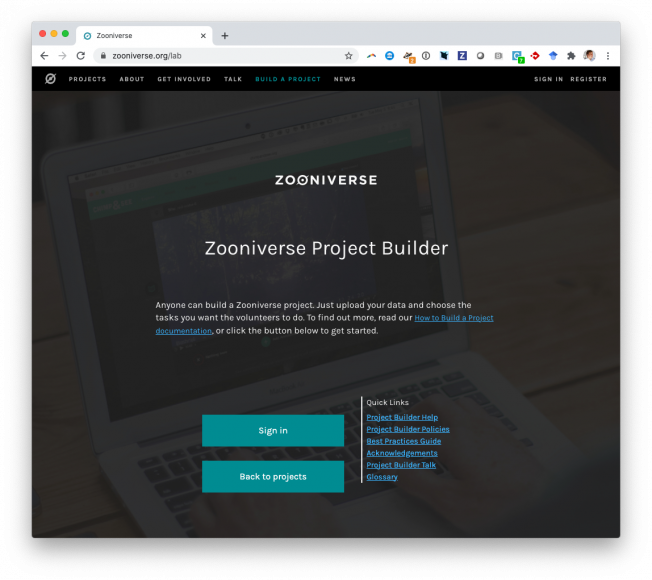Galaxy Zoo: A sample of blue early-type galaxies at low redshift
ArXiv 0903.3415 (2009)
Abstract:
We report the discovery of a population of nearby, blue early-type galaxies with high star formation rates (0.5 < SFR < 50 Msun/yr). They are identified by their visual morphology as provided by Galaxy Zoo for SDSS DR6 and their u-r colour. We select a volume-limited sample in the redshift range 0.02 < z < 0.05, corresponding to luminosities of approximately L* and above, and with u-r colours significantly bluer than the red sequence. We confirm the early-type morphology of the objects in this sample and investigate their environmental dependence and star formation properties. Blue early-type galaxies tend to live in lower-density environments than `normal' red sequence early-types and make up 5.7 +/-0.4% of the low-redshift early-type galaxy population. We find that such blue early-type galaxies are virtually absent at high velocity dispersions above 200 km/s. Our analysis uses emission line diganostic diagrams and we find that ~25% of them are actively starforming, while another ~25% host both star formation and an AGN. Another ~12% are AGN. The remaining 38% show no strong emission lines. When present and uncontaminated by an AGN contribution, the star formation is generally intense. We consider star formation rates derived from Halpha, u-band and infrared luminosities, and radial colour profiles, and conclude that the star formation is spatially extended. Of those objects that are not currently undergoing star formation must have ceased doing so recently in order to account for their blue optical colours. The gas phase metallicity of the actively starforming blue early-types galaxies is supersolar in all cases. We discuss the place of these objects in the context of galaxy formation. A catalogue of all 204 blue early-type galaxies in our sample, including star formation rates and emission line classification, is provided.Galaxy Zoo: Disentangling the environmental dependence of morphology and colour
Monthly Notices of the Royal Astronomical Society 399:2 (2009) 966-982
Abstract:
We analyse the environmental dependence of galaxy morphology and colour with two-point clustering statistics, using data from the Galaxy Zoo, the largest sample of visually classified morphologies yet compiled, extracted from the Sloan Digital Sky Survey. We present two-point correlation functions of spiral and early-type galaxies, and we quantify the correlation between morphology and environment with marked correlation functions. These yield clear and precise environmental trends across a wide range of scales, analogous to similar measurements with galaxy colours, indicating that the Galaxy Zoo classifications themselves are very precise. We measure morphology marked correlation functions at fixed colour and find that they are relatively weak, with the only residual correlation being that of red galaxies at small scales, indicating a morphology gradient within haloes for red galaxies. At fixed morphology, we find that the environmental dependence of colour remains strong, and these correlations remain for fixed morphology and luminosity. An implication of this is that much of the morphology-density relation is due to the relation between colour and density. Our results also have implications for galaxy evolution: the morphological transformation of galaxies is usually accompanied by a colour transformation, but not necessarily vice versa. A spiral galaxy may move on to the red sequence of the colour-magnitude diagram without quickly becoming an early type. We analyse the significant population of red spiral galaxies, and present evidence that they tend to be located in moderately dense environments and are often satellite galaxies in the outskirts of haloes. Finally, we combine our results to argue that central and satellite galaxies tend to follow different evolutionary paths. © 2009 RAS.Galaxy Zoo: Hanny's Voorwerp, a quasar light echo?
Monthly Notices of the Royal Astronomical Society 399:1 (2009) 129-140
Abstract:
We report the discovery of an unusual object near the spiral galaxy IC 2497, discovered by visual inspection of the Sloan Digital Sky Survey (SDSS) as part of the Galaxy Zoo project. The object, known as Hanny's Voorwerp, is bright in the SDSS g band due to unusually strong [O iii]4959, 5007 emission lines. We present the results of the first targeted observations of the object in the optical, ultraviolet and X-ray, which show that the object contains highly ionized gas. Although the line ratios are similar to extended emission-line regions near luminous active galactic nucleus (AGN), the source of this ionization is not apparent. The emission-line properties, and lack of X-ray emission from IC 2497, suggest either a highly obscured AGN with a novel geometry arranged to allow photoionization of the object but not the galaxy's own circumnuclear gas, or, as we argue, the first detection of a quasar light echo. In this case, either the luminosity of the central source has decreased dramatically or else the obscuration in the system has increased within 10 5 yr. This object may thus represent the first direct probe of quasar history on these time-scales. © 2009 RAS.Galaxy Zoo: The dependence of morphology and colour on environment
Monthly Notices of the Royal Astronomical Society 393:4 (2009) 1324-1352
Abstract:
We analyse the relationships between galaxy morphology, colour, environment and stellar mass using data for over 105 objects from Galaxy Zoo, the largest sample of visually classified morphologies yet compiled. We conclusively show that colour and morphology fractions are very different functions of environment. Both colour and morphology are sensitive to stellar mass. However, at fixed stellar mass, while colour is also highly sensitive to environment, morphology displays much weaker environmental trends. Only a small part of both the morphology-density and colour-density relations can be attributed to the variation in the stellar-mass function with environment. Galaxies with high stellar masses are mostly red in all environments and irrespective of their morphology. Low stellar-mass galaxies are mostly blue in low-density environments, but mostly red in high-density environments, again irrespective of their morphology. While galaxies with early-type morphology do always have higher red fractions, this is subdominant compared to the dependence of red fraction on stellar mass and environment. The colour-density relation is primarily driven by variations in colour fractions at fixed morphology, in particular the fraction of spiral galaxies that have red colours, and especially at low stellar masses. We demonstrate that our red spirals primarily include galaxies with true spiral morphology, and that they constitute an additional population to the S0 galaxies considered by previous studies. We clearly show there is an environmental dependence for colour beyond that for morphology. The environmental transformation of galaxies from blue to red must occur on significantly shorter time-scales than the transformation from spiral to early-type. We also present many of our results as functions of the distance to the nearest galaxy group. This confirms that the environmental trends we present are not specific to the manner in which environment is quantified, but nevertheless provides plain evidence for an environmental process at work in groups. However, the properties of group members show little dependence on the total mass of the group they inhabit, at least for group masses. Before using the Galaxy Zoo morphologies to produce the above results, we first quantify a luminosity-, size- and redshift-dependent classification bias that affects this data set, and probably most other studies of galaxy population morphology. A correction for this bias is derived and applied to produce a sample of galaxies with reliable morphological-type likelihoods, on which we base our analysis. © 2009 RAS.Destruction of Molecular Gas Reservoirs in Early-Type Galaxies by Active Galactic Nucleus Feedback
ArXiv 0809.1096 (2008)



